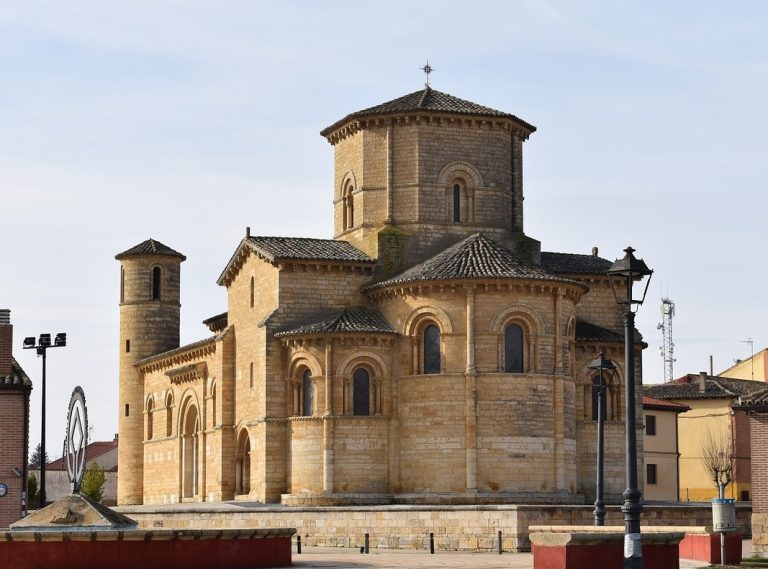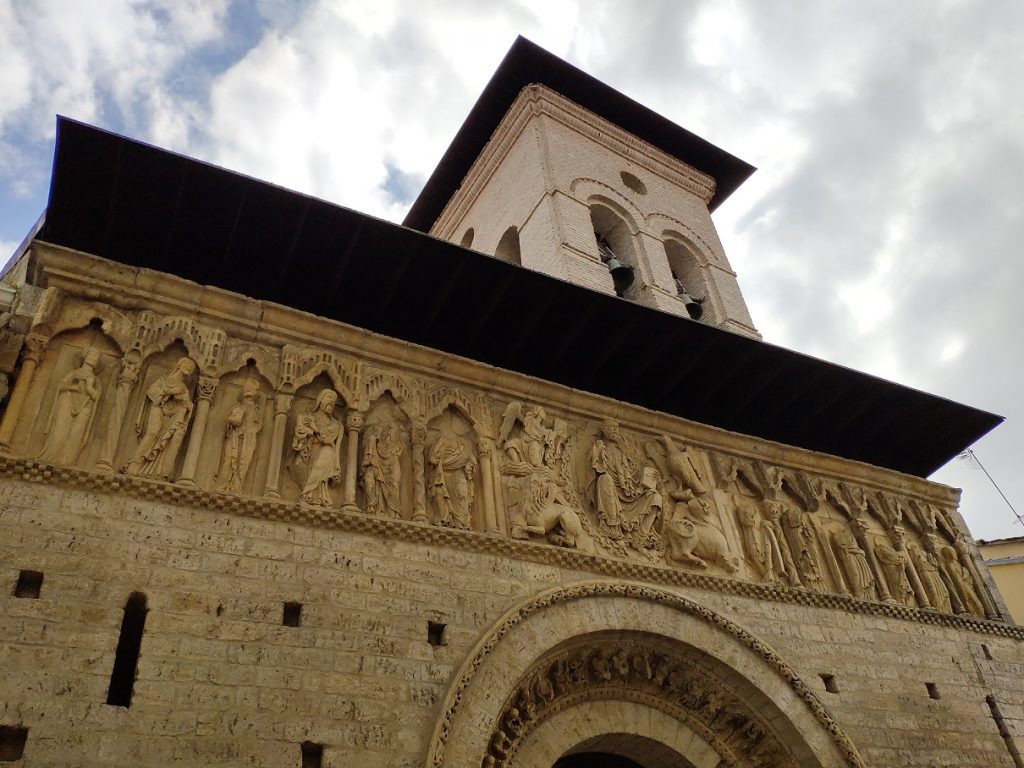The Camino de Santiago in Palencia (Way of St. James) runs through the province from east to west, from Burgos to Leon, along 70 kilometres. Many pilgrims from all over the world come to our country to walk the Camino de Santiago motivated by their faith. This has meant an enormous economic, artistic and social development in the towns near the Way, of which we still have traces today.
An ancestral route and millions of people from all walks of life who have become pilgrims have meant that the Camino de Santiago is today much more than a spiritual itinerary.
Pilgrims and tourists travel every day on foot, by bike or by car along the 70 kilometres that form part of the French Way in the province of Palencia. A route declared a World Heritage Site in 1993 that hides and preserves in every corner, in every village, numerous works of art, mainly in the Romanesque style.
Palencia stands out for having the only navigable section of the French Way, between the towns of Boadilla del Camino and Frómista. Likewise, in Boadilla del Camino you can see a richly decorated 15th century Jurisdictional Rollo that reveals an important historical legacy. In Frómista and Carrión de los Condes, Romanesque art welcomes pilgrims, especially in the Church of San Martín de Tours in Frómista and the Church of Santiago in Carrión de los Condes. We will come across the Templars when we reach Villalcázar de Sirga and we will find the best flavours to continue the Way.
Palencia is present in the central stages of the Way of St. James from Roncesvalles:
- Stage from Castrojeriz to Frómista (24.7 km): In the middle of this stage, in the town of Itero de la Vega, the province of Burgos is left behind to enter Palencia. It is worth stopping in Boadilla del Camino to see the Jurisdictional Gothic Rollo and in Frómista to contemplate the quadruple lock of the Canal of Castile and the Church of San Martín de Tours, one of the jewels of Romanesque art in Palencia.
- Stage from Frómista to Carrión de los Condes (18.8 km): This stage takes us deeper into the Tierra de Campos in Palencia. It is worth stopping at the hermitage of San Miguel in Población de Campos; at the wooden coffered ceiling of the parish church of Villarmentero de Campos; the remains left by the Templars in the church of Santa María in Villalcázar de Sirga; and in Carrión de los Condes it is worth seeing the Monastery of San Zoilo and the façade of the Church of Santiago in Carrión de los Condes, whose Romanesque frieze will leave you speechless.
- Stage from Carrión de los Condes to Terradillos de los Templarios (26.3 km): After crossing Calzada de los Molinos and Cervatos de la Cueza, you reach Quintanilla de la Cueza, where you can visit the Roman villa La Tejada and its Roman mosaics, as well as the ancient heating systems, precursors of the Castilian glories. Following the Way is Calzadilla de la Cueza, Ledigos and Terradillos de los Templarios, a territory also linked to the Order of the Temple.
- Stage from Terradillos de los Templarios to Bercianos del Real Camino (23.2 km): There are only two more villages left on the route to leave behind the province of Palencia and begin the journey through the lands of León; these are Moratinos and San Nicolás del Real Camino.



Preparations for the Way of St. James
The stages of the Way of St. James in Palencia are, in general, of little difficulty and without great unevenness. The plains of the plateau and the cereal fields of Tierra de Campos dominate the landscape. In our province pilgrims do not step on asphalt. However, if you are not used to long walks, it is possible to divide the longer stages to adapt them to each person, as there are many hostels to make a stop along the way.
What to carry in the backpack to do the Camino de Santiago?
The luggage of a pilgrim can not be very heavy, but it is advisable to treasure in the backpack some items that are very useful for long walks and inclement weather that we can find on our journey. It is recommended that you carry a rucksack with a capacity of about 40 litres and a weight of about 6 kilos, containing at least the following:
- Footwear is the most important thing; it is advisable to have special hiking shoes that are not new to avoid chafing and it is also advisable to have some flip-flops for the shower.
- One pair of trousers and one pair of shorts.
- Three T-shirts (some sleeveless).
- A jumper or sweatshirt.
- A mackintosh.
- Three pairs of seamless socks.
- Three changes of underwear.
- To protect you from the sun: a cap, sunglasses and sunscreen.
- Toilet bag with toothbrush and toothpaste, soap and deodorant.
- Plasters and Vaseline for your feet, as well as some painkillers.
- A water bottle that can be refilled along the way and a walking stick.
- Mobile phone charger.
- Pilgrim’s credential.